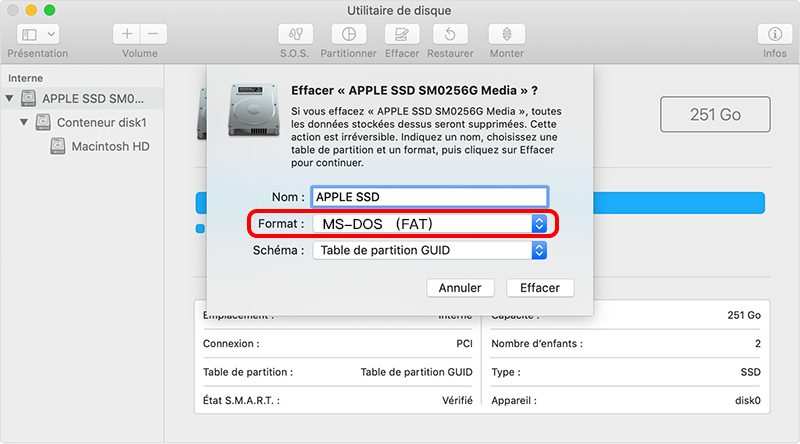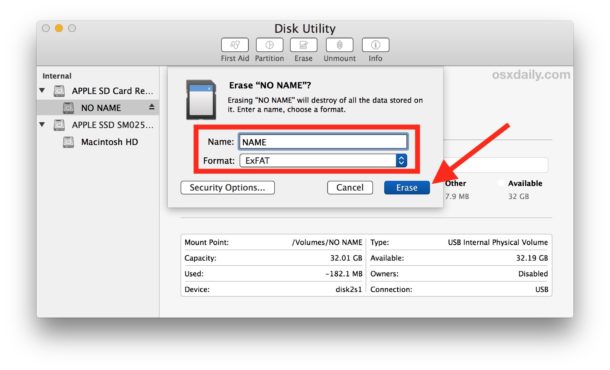



You can back to another drive, or use a cloud storage service like, Google Drive, iCloud, OneDrive, or Dropbox. Give the formatted disk a name and select either MS-DOS (FAT32) or ExFat from the format menu. From the disk utility toolbar, chose Erase. Because formatting the drive will delete all of your data, make a backup of anything you want to keep. Next, select Applications>Utilities and then launch Disk UtilityFrom the disk utility sidebar, select the USB drive.If you have specific instructions to use FAT32 and your drive is larger than 2GB, you'll need a third-party tool to format it as FAT32-continue with this method.If your drive is larger than 2TB and you just want to use it to share files between multiple modern operating systems (Windows 8 and later, macOS X 10.6.6 and later), use this method instead, and be sure to select exFAT as the file system type.If your drive is larger or you need to work with big files, it's better to use exFAT, which has almost identical compatibility. FAT32 Format (stylized as fat32format as written on the command line) is a disk formatting utility designed to format discs larger than 32 GB with the venerable FAT32 file system. The main difference is that you can't work with files larger than 4GB on FAT32, nor can it work with drives larger than 2TB. ExFAT, the successor to FAT32, also works on Windows, macOS, Linux, and other devices.


 0 kommentar(er)
0 kommentar(er)
